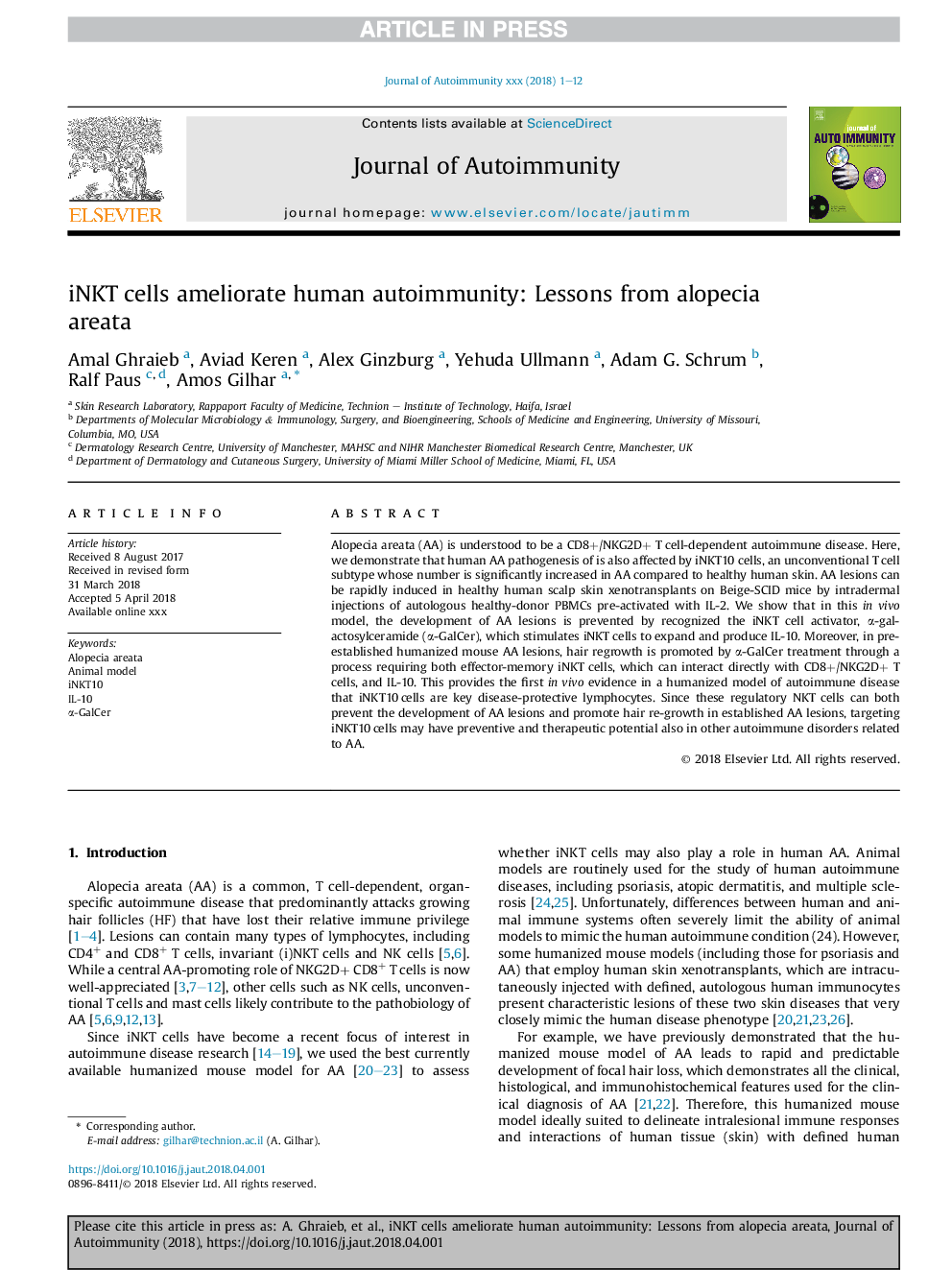| Article ID | Journal | Published Year | Pages | File Type |
|---|---|---|---|---|
| 8739508 | Journal of Autoimmunity | 2018 | 12 Pages |
Abstract
Alopecia areata (AA) is understood to be a CD8+/NKG2D+ T cell-dependent autoimmune disease. Here, we demonstrate that human AA pathogenesis of is also affected by iNKT10 cells, an unconventional T cell subtype whose number is significantly increased in AA compared to healthy human skin. AA lesions can be rapidly induced in healthy human scalp skin xenotransplants on Beige-SCID mice by intradermal injections of autologous healthy-donor PBMCs pre-activated with IL-2. We show that in this in vivo model, the development of AA lesions is prevented by recognized the iNKT cell activator, α-galactosylceramide (α-GalCer), which stimulates iNKT cells to expand and produce IL-10. Moreover, in pre-established humanized mouse AA lesions, hair regrowth is promoted by α-GalCer treatment through a process requiring both effector-memory iNKT cells, which can interact directly with CD8+/NKG2D+ T cells, and IL-10. This provides the first in vivo evidence in a humanized model of autoimmune disease that iNKT10â¯cells are key disease-protective lymphocytes. Since these regulatory NKT cells can both prevent the development of AA lesions and promote hair re-growth in established AA lesions, targeting iNKT10â¯cells may have preventive and therapeutic potential also in other autoimmune disorders related to AA.
Related Topics
Life Sciences
Immunology and Microbiology
Immunology
Authors
Amal Ghraieb, Aviad Keren, Alex Ginzburg, Yehuda Ullmann, Adam G. Schrum, Ralf Paus, Amos Gilhar,
